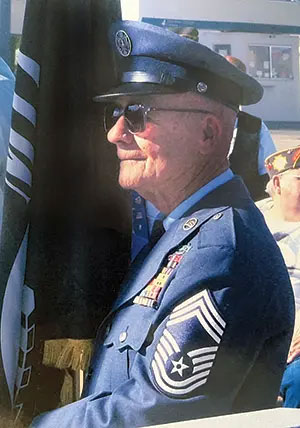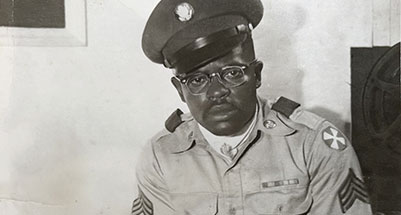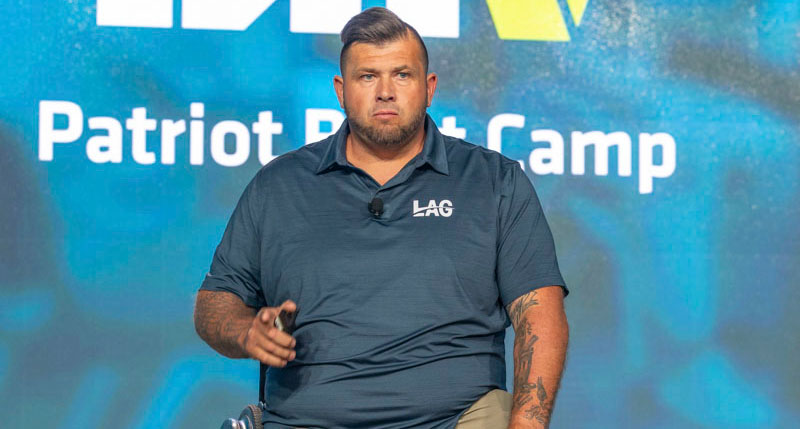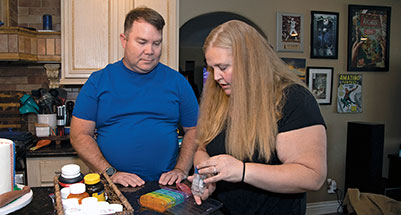
Paul Kerchum has dodged death at every turn. He came of age during the Great Depression, survived the nightmarish Bataan Death March and endured three and a half years as a prisoner of war in Japan during World War II.
Now, at 102, Kerchum is one of the last remaining survivors of the bloodcurdling march up the Bataan Peninsula on Luzon, the Philippines’ largest island. Japan stormed the archipelago’s beaches at the end of December 1941, hoping to oust Allied forces. As Japanese troops advanced through the rainforest, Kerchum’s unit, the 31st Infantry Regiment, was ordered to cover friendly units making their way to the peninsula.
However, by April, after months of fierce fighting, malnourishment, disease, and dwindling ammo and other crucial supplies, the regiment had no choice but to surrender to their soon-to-be captors. That’s when an estimated 10,000 Americans and 66,000 Filipinos were forcibly marched to an enemy-held POW camp—Camp O’Donnell.
Seventy years after slogging through the thick jungle, Kerchum vividly remembers what he and the others suffered.
“During the march, we were formed in three lines, and I was always in the middle line because the Japanese trucks were coming up, and they would whack people in the far line with their rifles or whatever they had in their hand,” recalled Kerchum, a DAV life member of Chapter 26 in Benson, Arizona. “So I found out, stay in the middle line, and I just watched the shoes in front of me.”
Official estimates of the horrendous trek range from 60 to 70 miles. Up to 10,000 prisoners were beaten; shot; bayoneted; and, in many cased, beheaded by the Japanese along the way. “I could hear the shots, I could hear the screams,” added Kerchum.
Today, he remains one of only a handful, at most, of Bataan Death March survivors. Rather than shying away from his brutal past, he often shares the remarkable yet horrific account of what he witnessed, though his candidness about those experiences is a relatively new development.
“He never talked about it—never,” said his daughter, Paula Desmarais. “He’s very open about it now, and he goes to schools to give talks.”
“Paul is living history, and his strength and resolve as a survivor of some of the most ghastly events from World War II is constantly on display,” said DAV National Commander Joe Parsetich. “By teaching the younger generations about what he and others suffered, he is ensuring that other survivors, and those who perished, will never be forgotten.”
Kerchum’s talks also include stories about his time aboard a Japanese “hell ship.”
Japan used these merchant vessels to relocate American POWs from the Philippines to other regions of Japanese-occupied territory. However, as the war raged at sea, American warplanes and submarines had no way of knowing their fellow countrymen laid tightly packed below the ships’ lower decks. In “Death on the Hellships: Prisoners at Sea in the Pacific War,” author Gregory Michno assessed that more than 21,000 Americans were unknowingly injured or killed by friendly fire.
After a year of captivity, which included building an airfield for Japan in the Philippines, Kerchum boarded the hell ship Haru Maru with 1,100 other captive Americans.
“The holes were covered. We remained in complete darkness,” said Kerchum. “All I kept hearing was the explosions from depth charges from the Japanese destroyer escort, and there was constant zigzagging of our ship.”
By November 1944, Kerchum was in a prison camp in northern Japan, working at Mitsubishi mine No. 11. To supplement the wartime labor shortage, Japan forced more than 1,000 Americans to exert themselves by extracting critical resources.
The POWs lived in a state of constant hunger, squalor and fear. On one occasion, they were forced to eat dog, after their Japanese guards provided the Americans with a single puppy. Each man received just a morsel to satiate his empty stomach.
The American POWs were elated when they got word of Japan’s unconditional surrender on Sept. 2, 1945. The next day, American B-29 bombers flew over the camp, dropping food, clothing and medicine. “They kept dropping us stuff, and we ate pretty good,” said Kerchum. “And after 30 days, I was no longer a lightweight.”
Despite the astonishing hardships during World War II, Kerchum decided to stay in uniform. He served for another 21 years with the Army Air Forces, later the U.S. Air Force. While he finished his career with high marks, the years immediately following his liberation were marred by insubordination—a relic, Kerchum suspects, of lingering mental health issues.
“We were complete basket cases,” he added, speaking of the 29 other former POWs assigned to the same unit. “We probably had PTSD, but it was unheard of at the time.”
But now, enough years have passed that Kerchum has made peace with his experiences.
“I asked him about God in the prison camp, and he said to me, ‘There was no God,’” said Paula. “But now, I think that’s what brought him to the point of forgiving and then letting go. It’s his faith.”






